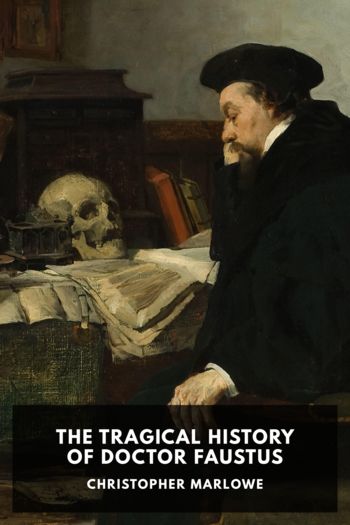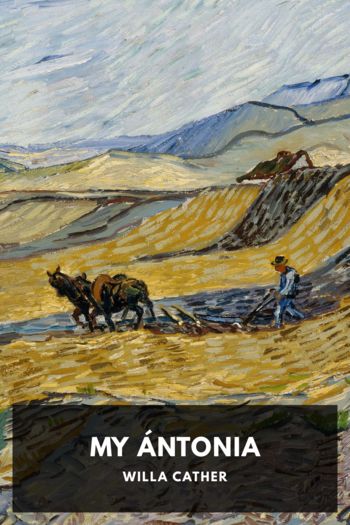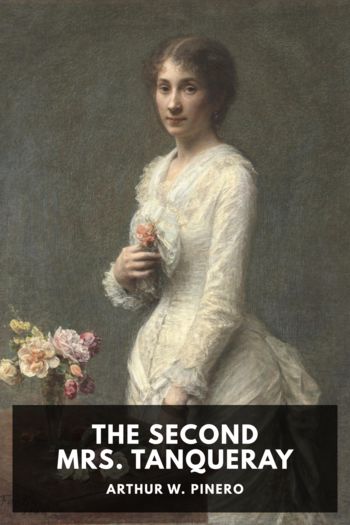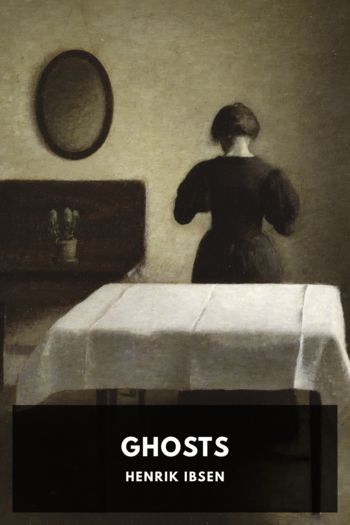Genre Other. Page - 297

Description
The Tragical History of Doctor Faustus, Christopher Marlowe’s classic interpretation of the Dr. Faustus legend, was first performed in London by the Admiral’s Men around 1592. It is believed to be the first dramatization of this classic tale wherein Faustus, a German scholar, trades his soul to Lucifer in return for magical powers and the command over the demon Mephistopheles. Faustus at first seeks to expand his knowledge of the universe, but soon finds that a deal with the devil brings little satisfaction. All too soon the contract expires, and Faustus is faced with the prospect of eternal damnation.
Two principal versions of this play exist, one based on the 1604 quarto (the A text) and a longer, emended version published in 1616 (the B text). This edition is based on Havelock Ellis’s 1893 edition of the 1604 text (the A text is currently believed by many scholars to be the closest to Marlowe’s original).
Often considered to be Marlowe’s greatest work, Doctor Faustus builds on the ancestry of the medieval morality play, but brings a more sympathetic view to the straying hero than those precursors to Elizabethan drama, and even ventures to pose questions of common Christian doctrine. This is the last play written by Marlowe before he was killed in a Deptford tavern.

Description
Written in the style of a memoir, My Ántonia chronicles Jim Burden’s friendship with the daughter of a Czech immigrant family. Recently orphaned, he moves west to Nebraska to live with his grandparents. Riding the same train is the Shimerda family, who are also on their way to settle in the area. The Shimerdas have a difficult life as pioneers: living in a sod house, working the fields, and running out of food in the winter. Jim soon becomes smitten with Ántonia, the eldest daughter, as they grow up and explore the landscape around them together. Through his eyes, we see both how she shapes the land around her and is shaped by the rigors of poverty.
Similarly to Jim, Willa Cather spent her early years in Nebraska but most of her adult life in Eastern cities. She pays homage to her homeland with her Prairie Trilogy of novels: O Pioneers!, The Song of the Lark, and My Ántonia. They are tinged with her characteristic straightforward language, reverence for nature, and nostalgia, even as she acknowledges the hardships of the past.
Published in 1918 to great enthusiasm, My Ántonia is considered one of Cather’s finest works and a defining point in her identity as a writer.

Description
While watching a film, Véronique d’Hergemont spots her childhood signature mysteriously written on the side of a hut in the background of a scene. Her visit to the location of the film shoot deepens the mystery, but also provides further clues that point her towards long-lost relations and a great secret from ancient history: a secret that will require the services of a particular man to unravel.
The Secret of Sarek was published in the original French in 1919, and in this English translation in 1920. It was Maurice Leblanc’s first Arsène Lupin novel written after the Great War, and its impact on Leblanc is palpable: the novel has a much darker tone than earlier works, and even the famous cheery charm of Lupin is diluted. The result is a classic horror story, bringing a new dimension to the series.

Description
Charles Swinburne and his friend, the private detective Rupert Grant, are startled when Major Brown recounts the things that happened to him that morning. Along with Rupert’s brother, the ex-judge Basil Grant, they launch headlong into their investigation only to discover that the antagonist is a member of the Club of Queer Trades. Over the course of six short stories, the secrets of the Club come to light in surprising ways.
The Club of Queer Trades was one of G. K. Chesterton’s earlier works, and was originally serialized in Harper’s Weekly in 1904 before being collected into a novel in 1905. In recent years it was produced as a six-part radio drama by the BBC.

Description
Arthur Pinero wrote The Second Mrs. Tanqueray in 1893 after penning several successful farces. Playing on the “woman with a past” plot that was popular in melodramas, Pinero steered it in a more serious direction, centering the play around the social consequences arising when Aubrey Tanqueray remarries in an attempt to redeem a woman with a questionable past.
The play’s structure is based on the principles of the “well-made play” popular throughout the 19th-century. But just as Wilde manipulated the conventions of the “well-made play” to produce a new form of comedy, so did Arthur Pinero manipulate it, forgoing the happy ending to produce an elevated form of tragedy.
The Second Mrs. Tanqueray was first performed in 1893, at the St. James Theatre, London, at a time when England was still resisting the growing movement in Europe towards realism and the portrayal of real social problems and human misconduct. But while it was regarded as shocking, it ran well and made a substantial profit. Theatre historian J. P. Wearing phrased it thus: “although not as avant-garde as Ibsen’s plays, Tanqueray confronted its fashionable St. James’s audiences with as forceful a social message as they could stomach.”

Description
Greenmantle is the second of John Buchan’s novels to feature Richard Hannay, a Scottish intelligence office in the British army, and as such is the sequel to The Thirty-Nine Steps.
The book gives the account of Hannay and his associate’s separate journeys through war-torn Europe to Constantinople to thwart an uprising that is poised to throw the Middle East, India, and North Africa into disarray, changing the course of the war.
The book was popular when first published and although it has never been made into a film, the director Alfred Hitchcock was said to prefer Greenmantle to The Thirty-Nine Steps, and considered filming it on several occasions.

Description
Written in 1881, when melodrama and farce were still at their peak of popularity, Ibsen’s Ghosts is a three-act tragedy that explores uncomfortable, even forbidden themes. It is also a highly critical commentary on the morality of the day. The play centers around the widow of a prominent Norwegian sea captain whose son returns home and, with tragic consequences, revives the ghosts of the past that she has long labored to put to rest.
Ghosts immediately became a source of controversy for its inclusion of topics like venereal disease, incest, and euthanasia, and it was banned from being performed in England for many years. Its arrival signals a shift in the nature of theatre and, despite negative criticism, it was translated into other languages and performed in Sweden, Germany, and New York within a few years of its debut. It stands now as one of the works considered to have ushered in the era of modern drama.

Description
Gustave Flaubert was an influential novelist who had both the characteristics of a romanticist and a realist. The short stories in this collection put that dichotomy on display.
Flaubert wrote the first story, “The Dance of Death” when he was only 17 years old. It is written in a play format—though sometimes referred to as a prose poem—and features a conversation between Death, Satan and Nero. “The Legend of Saint Julian the Hospitaller” is a story about Julian the Hospitaller, a man who shares some similarities with Oedipus; “A Simple Soul” tells the story of a servant girl named Felicité; and lastly “Herodias” retells the beheading of St. John the Baptist.

Description
Ivan Bunin was a Russian author, poet and diarist, who in 1933 (at the age of 63) won the Nobel Prize in Literature “for the strict artistry with which he has carried on the classical Russian traditions in prose writing.” Viewed by many at the time as the heir to his friend and contemporary Chekhov, Bunin wrote his poems and stories with a depth of description that attracted the admiration of his fellow authors. Maxim Gorky described him as “the best Russian writer of the day” and “the first poet of our times,” and his translators include D. H. Lawrence and Leonard Woolf.
This collection includes the famous The Gentleman from San Francisco, partially set on Capri where Bunin spent several winters, and stories told from the point of view of many more characters, including historic Indian princes, emancipated Russian serfs, desert prophets, and even a sea-faring dog. The short stories collected here are all of the available public domain translations into English, in chronological order of the original Russian publication. They were translated by S. S. Koteliansky, D. H. Lawrence, Leonard Woolf, Bernard Guilbert Guerney, and The Russian Review.

Description
Our American Cousin is a three-act play written by English playwright Tom Taylor. The play opened in London in 1858 but quickly made its way to the U.S. and premiered at Laura Keene’s Theatre in New York City later that year. It remained popular in the U.S. and England for the next several decades. Its most notable claim to fame, however, is that it was the play U.S. President Abraham Lincoln was watching on April 14, 1865 when he was assassinated by John Wilkes Booth, who used his knowledge of the script to shoot Lincoln during a more raucous scene.
The play is a classic Victorian farce with a whole range of stereotyped characters, business, and many entrances and exits. The plot features a boorish but honest American cousin who travels to the aristocratic English countryside to claim his inheritance, and then quickly becomes swept up in the family’s affairs. An inevitable rescue of the family’s fortunes and of the various damsels in distress ensues.
Our American Cousin was originally written as a farce for an English audience, with the laughs coming mostly at the expense of the naive American character. But after it moved to the U.S. it was eventually recast as a comedy where English caricatures like the pompous Lord Dundreary soon became the primary source of hilarity. This early version, published in 1869, contains fewer of that character’s nonsensical adages, which soon came to be known as “Dundrearyisms,” and for which the play eventually gained much of its popular appeal.